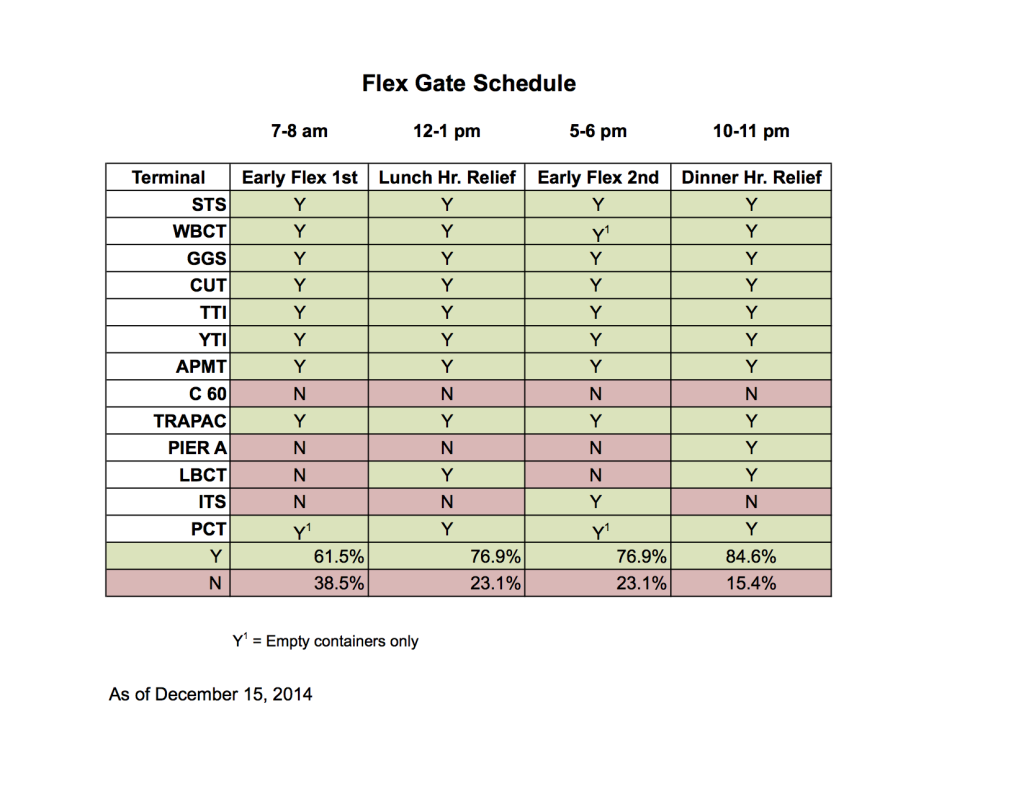Dear Users of OffPeak Gates,
As you may know, congestion at the Ports of Los Angeles and Long Beach has increased over the past several months amid disruptions in the supply of chassis and other factors. The marine terminal operators, while not owning chassis themselves, have been working with other key parties including chassis leasing companies to help mitigate the problems. The chassis disruptions have been compounded by ocean carrier alliances that are dispersing cargo among more terminals, the arrival of larger ships, a shortage of rail cars and locomotives, and the struggles of trucking companies to retain drivers.
In the meantime, the terminals continue providing additional labor to ensure sufficient capacity at the truck gates. The majority of the 13 international container terminals at the Los Angeles and Long Beach ports are keeping truck gates open during lunch hours and shift changes. As the accompanying schedule of relief and flex gates shows, 77% of the terminals are hiring additional labor to keep terminal gates open during the day shift’s contractually-mandated lunch hour from noon to 1:00 p.m., while 85% are keeping gates open during the OffPeak shift’s 10 p.m. to 11:00 p.m. dinner hour.
Terminals are also opening gates early in the morning (flex gates) and keeping them open between shifts. Ten of the 13 terminals (77%) are running truck gates between the end of the day shift at 5:00 p.m. and the start of the OffPeak shift at 6:00 p.m., while eight (61%) are opening an hour before the 8 a.m. start of the day shift.
In addition, terminals continue to adjust OffPeak shift availability to meet demand. Beginning on Saturday Oct. 25, Global Gateway South (GGS) terminal at the Port of Los Angeles will begin offering an OffPeak shift during the daytime on Saturdays, bringing the total number of terminals operating Saturdays to eight. Monday, Wednesday and Thursday nights each have 12 terminals open to trucks, while all terminals are currently open Tuesday nights.
While we anticipate congestion will ease somewhat as the peak season passes, we expect it will take several months for the chassis situation to significantly improve. Although the current delays aren’t due to availability of truck gates, the terminals are monitoring the situation closely and will continue to adjust gate hours as needed.
Regards,
John Cushing
President, PierPass Inc.

